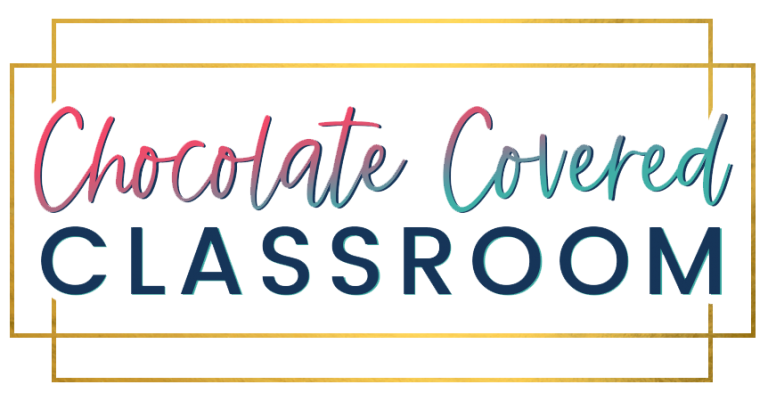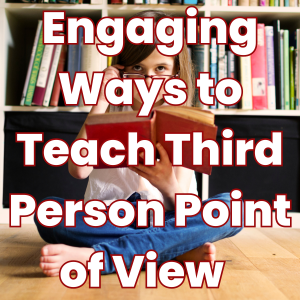Looking for meaningful, age-appropriate ways to celebrate Pride Month in the classroom? This post shares simple, inclusive ideas plus a powerful personal story of standing up for representation—even when it wasn’t easy.
Let me tell you about the time a parent tried to smear me in a local Facebook group.
The offense?
I read a book about penguins.
Well—one penguin. And his partner.
You probably know the book: And Tango Makes Three. It’s a gentle, true story about two male penguins raising a chick together at the zoo. My students were completely engaged. We had an age-appropriate, thoughtful discussion about families—how they come in all shapes and sizes, and how love makes a family.
But one parent wasn’t having it. She jumped into a local Facebook group and accused me of “pushing an agenda.”
Was it frustrating? Yes.
Was it worth it? Absolutely.
Honoring Pride Month in the classroom isn’t about controversy—it’s about compassion, inclusion, and representation. And I’d read that book again in a heartbeat.
🌟 Why Pride Month in the Classroom Matters
Students deserve to see themselves—and their families—reflected in the books we read, the stories we tell, and the values we model. Pride Month in the classroom is about creating a space where all students feel safe, seen, and supported.
Even small, intentional choices can make a big impact.
🌈 5 Empowering Ways to Celebrate Pride Month in the Classroom
If you’re wondering how to celebrate Pride Month in a way that’s inclusive, age-appropriate, and true to your values, here are some simple strategies you can implement with confidence:
1. 📚 Read-Alouds with LGBTQ+ Representation
Normalize inclusion with books that feature diverse families and identities. A few student-friendly favorites:
- Red: A Crayon’s Story by Michael Hall
- Julian is a Mermaid by Jessica Love
- Stella Brings the Family by Miriam B. Schiffer
- And Tango Makes Three by Justin Richardson
These titles help create a welcoming environment during Pride Month in the classroom—without requiring a major curriculum shift. I highly suggest incorporating books that feature LGBTQ+ characters all year long, not just in June!
2. 🎨 Add Inclusive Bulletin Boards or Decor
Create a “Families Are Beautiful” display or a rainbow-themed “Everyone Belongs Here” wall. Visual representation sends a powerful message of inclusion during Pride Month and beyond.
4. 🏛️ Highlight LGBTQ+ Trailblazers
Weave LGBTQ+ voices into your existing curriculum—not as a special lesson, but as a natural part of your daily routines. Include changemakers like Bayard Rustin, Sally Ride, Marsha P. Johnson, and Frida Kahlo in your morning messages, social studies lessons, or biography units.
Here are a few morning message examples you can use or adapt:
- 📝 “Today we’re learning about Bayard Rustin, a civil rights leader and organizer of the 1963 March on Washington. He believed in peace, justice, and equality for all. How can we be upstanders like Bayard today?”
- 📝 “Sally Ride was the first American woman in space—and she was also part of the LGBTQ+ community. Her courage reminds us that we can be many things at once: curious, kind, brave, and true to ourselves.”
- 📝 “Marsha P. Johnson was a leader, a protester, and someone who believed that everyone deserves to be treated with love and dignity. What are some kind things we can do to make others feel seen today?”
- 📝 “Frida Kahlo used her art to express her feelings, identity, and culture. Today, let’s think about one way we can express ourselves in an authentic way.”
5. 🗣️ Use Inclusive Language
Subtle shifts—like saying “grown-ups” or “caregivers” instead of “mom and dad”—make a big difference for students with non-traditional family structures.
Here is a cute Seasame Street song for Pride Month!
👏 You Don’t Have to Do Everything—Just Do Something
Celebrating Pride Month in the classroom doesn’t have to be complicated. But doing something—reading a book, changing your language, displaying a quote—sends a powerful message:
You belong here. You are safe here. You matter.
❤️ Keep Showing Up
Teaching with pride takes courage—but you’re not alone. Whether it’s penguins or posters, representation matters. Your classroom can be a place where kids feel valued exactly as they are.
And if a penguin causes drama again?
You’ll know what to do.




